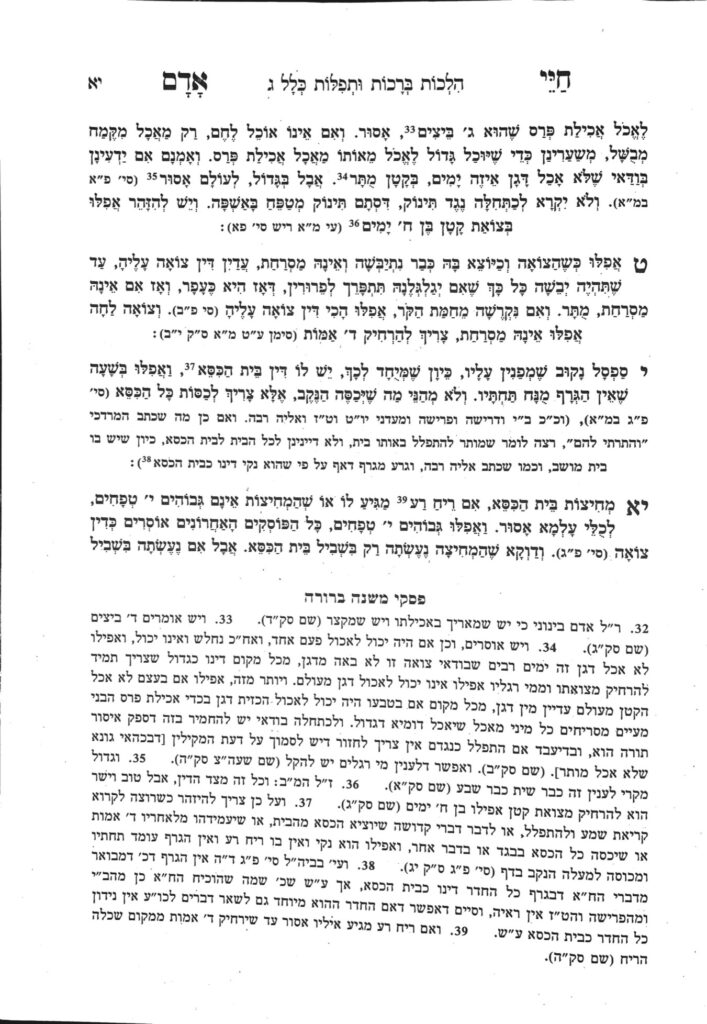We are continuing in siman 10. The Chayei Adam writes that people used to have a designated chair with a hole in it, which would be placed over the chamberpot. This chair has the halachic status of a beis hakisei, so even when the chamberpot is not there, the seat is considered graf shel re’i. Therefore, one would have to cover the entire seat in order to daven or learn in its vicinity. A practical example of this halacha includes childrens’ training seats and potties. Assuming it does not have a smell, it must be behind or to the side of a person at a distance of four amos. If it is in front of a person, it must be far enough away that it is out of their eyesight (see more in shiur 1510).
In siman 11, the Chayei Adam discusses the mechitzos of a beis hakisei. First, if the smell permeates beyond the walls of the beis hakisei, the walls do not help. Next, if the walls are not 10 tefachim tall, they do not help either. (In these cases, one would have to distance themselves until they can no longer smell it, plus four amos, as we learned in shiur 1510).
If the walls are 10 tefachim tall, the beis hakisei is now considered a different domain. However, we consider the walls of the beis hakisei as part of the beis hakisei itself, so one would still have to distance themselves four amos from the walls (assuming there is no smell). (The Chayei Adam clarifies that if the walls of the beis hakisei are a part of a larger home structure, this halacha does not apply.) This halacha applies to outhouses, portable toilets and the like. A person cannot learn or daven in their presence. As we learned (shiur 1510), if it is behind or to the side, one must distance themselves four amos. If it is in front, one must distance themselves to the point that it is not in their eyesight. According to many poskim, this is a din deoraysa, so one must be machmir on this safeik. Although this halacha does not apply to our homes, it certainly applies to when one is walking outside, in parks or the like. One cannot speak words of torah or davening, and preferably should not think them either.
Summary
- The chair used over a chamberpot has the status of graf shel re’i.
- The walls of a beis hakisei have the halachic status of the beis hakisei itself, unless it is part of a larger structure, such as a home. When it is not part of a larger structure, one must distance themselves from the walls in the same way they distance themselves from actual tzoah.



